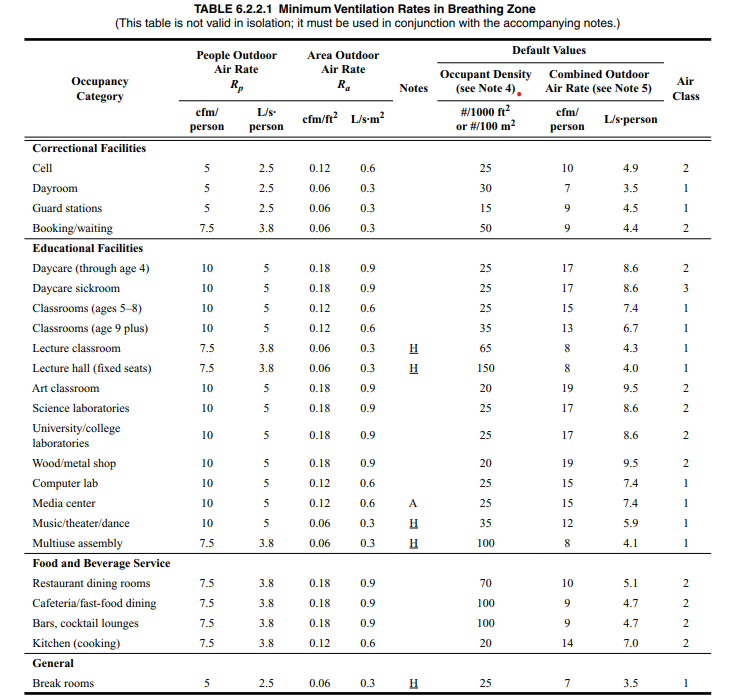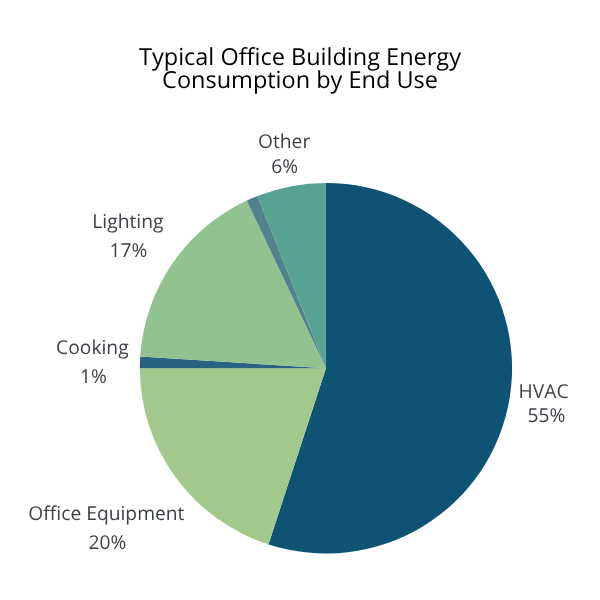BLOG
Did you know that poor indoor air quality in offices can directly impact your employees’ health and productivity?
A study conducted by the Harvard T.H. Chan School of Public Health found that employees working in environments with poor indoor air quality experience a 6% to 9% decrease in productivity. This decrease was observed in various aspects of office work performance, with the higher value obtained in field validation studies. (Source: PubMed)
Furthermore, research indicates that inadequate ventilation systems are a common issue in office buildings, leading to increased levels of indoor pollutants. It is clear that improving the air quality in your workplace isn’t just beneficial: it is essential.
Discover effective strategies to enhance the air quality in your offices and promote a healthier, more productive work environment.
In accordance with international occupational health guidelines, employers are responsible for ensuring a healthy indoor environment for their employees.
The World Health Organization (WHO) emphasizes that indoor air should be sufficiently clean to:
Protect workers’ health.
Prevent excessive temperature variations and condensation.
Avoid unpleasant odors.
Similarly, the Occupational Safety and Health Administration (OSHA) recommends that employers maintain adequate indoor air quality conditions, including proper ventilation and the control of airborne contaminants, to protect workers’ health.
It is essential to note that these recommendations apply to various types of workspaces, including:
Spaces with non-specific pollution, where pollution is primarily related to human presence.
Spaces with specific pollution, where hazardous or irritating substances are emitted.
Sanitary facilities, which require special attention to air quality.
Offices are generally considered spaces with non-specific pollution, meaning they must be equipped with either natural or mechanical ventilation. In the case of mechanical ventilation, a minimum fresh air supply per occupant must be ensured, in line with international indoor air quality standards.

Since we’re talking about air quality in offices, you probably wonder about the pollutants that are being talked about, don’t you?
Offices can be exposed to different indoor air pollutants, each with potential impacts on occupant comfort and health. Here is a summary of the main pollutants encountered in offices and their potential to impact health:
CO2 is mainly emitted by human respiration. Intense CO2 levels can be achieved when there is no ventilation or insufficient air renewal.
| Impact: → High CO2 can cause decreased concentration, headaches, fatigue and cognitive impairment.
VOCs are mainly emitted by chemicals in cleaning products, materials (walls, floors), furniture, photocopiers and cosmetics used by occupants.
A volatile organic compound is particularly common, formaldehyde. It is used as a preservative and curing agent in certain paints, varnishes and wood coatings. It can also be released by other building materials such as plywood which is often used in furniture and cabinet making
| Impact: → They can cause irritation of the eyes, nose and throat, headaches, allergies or even long-term respiratory problems.
Fine particles are tiny solid or liquid particles suspended in the air. There are different sources of fine particulate pollution:
Fine particles from outside pollution can enter offices through ventilation or window opening. These particles can be due to pollution from human sources (cars, construction,heating, etc.) but also from natural sources such as pollen or desert dust for example.
| Impact: → They can penetrate deep into the lungs according to their size, causing respiratory problems, cardiovascular diseases.
Outdoor activities that generate outdoor pollution are the main source of fine particles indoors but also NO2, O3 and SO2.
This is due to the transfer of these pollutants indoors during ventilation or mechanical ventilation without the use of filters. Outdoor sources of pollution are mainly related to cars, industries, construction sites and weather.
Depending on the orientation and geographical location of the building (urban or peri-urban environment for example), exposure to external pollutants inside offices will be different.
Sick Building Syndrome (SBS) is a phenomenon that remains relatively underrecognized but may affect up to 30% of buildings worldwide, including residential, workplace, educational, healthcare, recreational, and public service facilities.
According to a report by the World Health Organization (WHO), Sick Building Syndrome is defined as:
“a situation in which building occupants experience acute health and comfort effects that appear to be linked to time spent in a building, but no specific illness or cause can be identified.”
(Source: World Health Organization, Indoor Air Quality: A Guide for Facility Managers)
Irritations, asthma, allergies, headaches, drowsiness… The health of your employees can deteriorate when the working environment is not healthy! Poor air quality is not the only reason for these symptoms. Other factors, such as noise levels or lighting in buildings may be responsible for this and contribute to the reduction of employee well-being.
You want to maintain a workplace conducive to performance and well-being? While air quality is not the only criterion to consider, it would seem that this is a priority area for improvement. In fact, in one of his studies, David P. Wyon, a professor at the Technical University of Denmark, states that poor indoor air quality can reduce work performance by 6 to 9%, This is due in part to the headaches and the resulting loss of concentration.
For this study, participants who were exposed to high levels of CO2 had decreased performance.
In addition to good sanitary quality, air quality also depends on thermal comfort. An OQAI study found that the second source of discomfort in the office (just after the noise) is too dry air. The cause: poor ventilation which can dry out the indoor air. This may result in, for example:
Conversely, excess moisture in the air can intensify the feeling of humidity and promote the appearance of mold.
What about the open spaces, these collective workspaces that bring together all the offices in a single large room? Are they less polluted?
Oh no! The 2019 Purdue University study says that air is even more polluted than in conventional offices. With more occupants, the CO2 rate explodes… and so do pollutants (source: Purdue). Yet, these shared spaces are increasingly common.

Commercial buildings, including offices, account for approximately 40% of global energy consumption and over one-third of carbon emissions.
But what if you were told that poor ventilation contributes to excessive and unnecessary energy consumption? To ensure healthy air and energy savings, ventilation must be controlled. To ensure healthy indoor air quality and achieve energy savings, it’s crucial to monitor and optimize your building’s ventilation systems.

Based on data provided by Cornell Univerisity, Heating, Ventilation, and Air Conditioning (HVAC) systems can account for up to 40–50% of a commercial building’s total energy consumption.
Implementing smart control strategies, such as reducing ventilation in unoccupied spaces, can lead to significant energy savings.
Beyond energy consumption, poor indoor air quality increases absenteeism. And as seen earlier, it decreases the productivity of workers, undeniably involving direct and indirect costs for the company…
You can start with an inventory: what about the temperature and humidity in your building? The condition of the ventilation must then be checked to ensure that the rooms are properly ventilated.
To ensure that the ventilation is properly regulated and operates as required, it is essential to monitor it. Our INDALO® Supervision solution can take care of these settings for you and ensure healthy air throughout the building. Thanks to its predictive capabilities, the ventilation is activated when it is needed and at the right time. The data is accessible via a dashboard to allow you to know precisely the state of your past, present and future air.
By optimising the operation of your HVAC systems via a BMS for example, our solution also allows you to significantly reduce your energy consumption.
To go further, did you know that you can also label your building? For example:
As you can see, indoor air quality is best monitored to ensure the well-being of those who work there. In addition to providing your employees with a healthy work environment, you will avoid unnecessary energy consumption and productivity losses. What to ensure the smooth operation and sustainability of your company!

Bonjour ! C'est nous, les cookies 🍪
Nous sommes chargés de compter le nombre de visites sur ce site internet. Nous aidons énormément les personnes qui travaillent ici, car nous leur permettons d'améliorer le contenu du site internet mais aussi de rendre votre visite plus agréable.